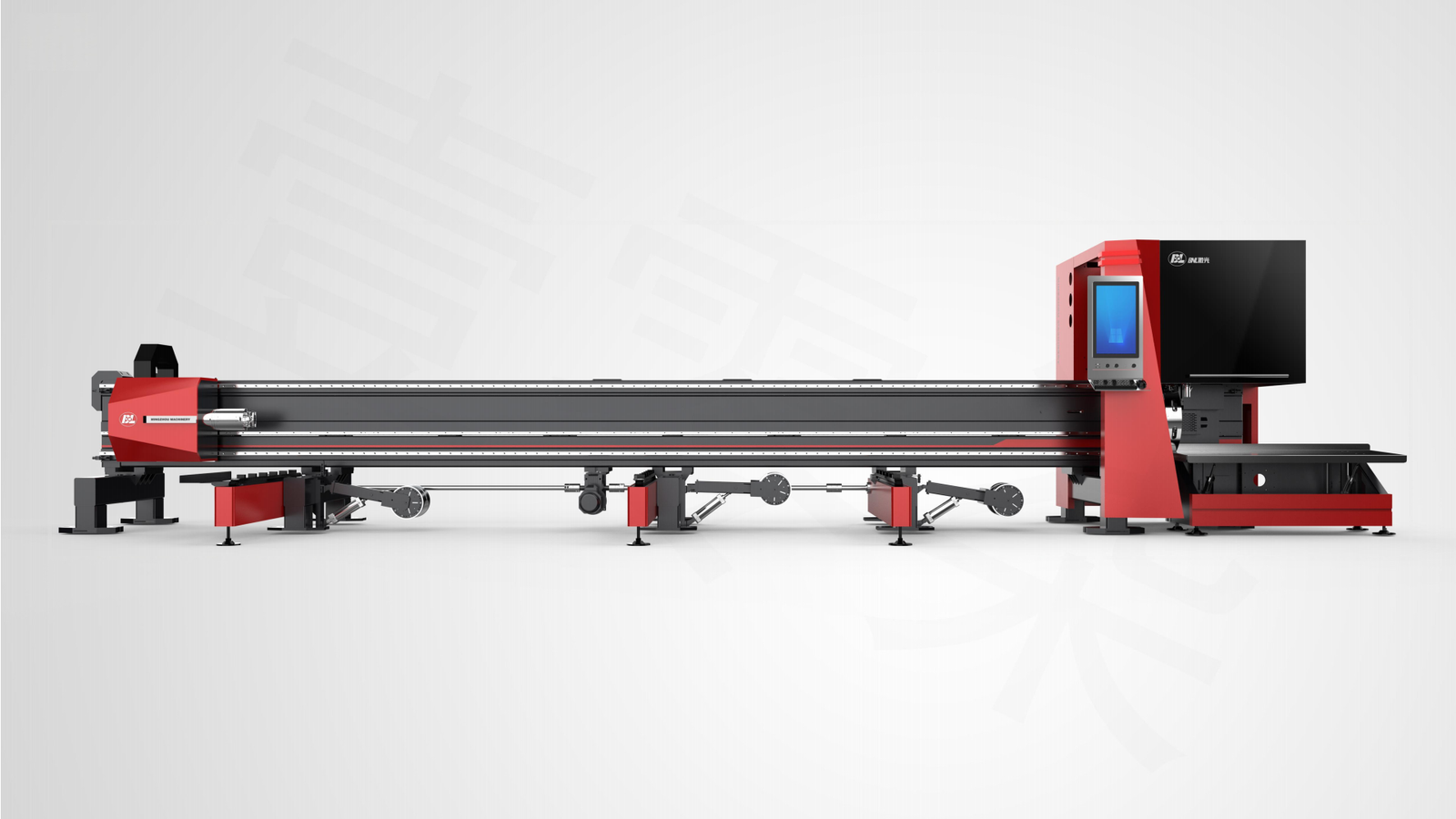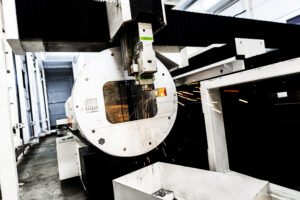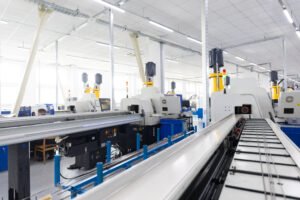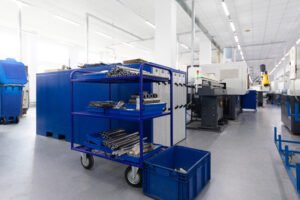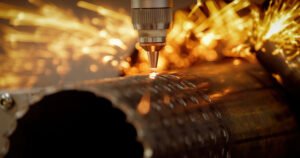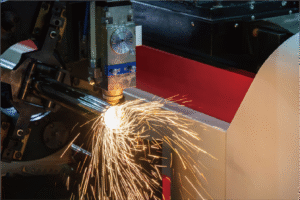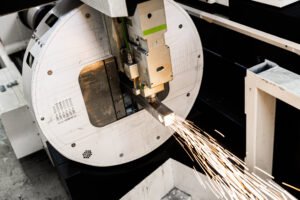Как станки для резки металлических труб помогают мебельному производству
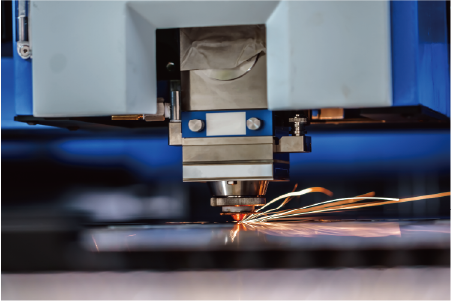
Вы сталкиваетесь со сложностями традиционного изготовления металлических труб в мебельном производстве? Неэффективные методы резки могут существенно препятствовать инновациям и увеличивать эксплуатационные расходы. Современные станки для резки металлических труб - это ключ к открытию новых возможностей для повышения эффективности и дизайна.
Станки для резки металлических труб незаменимы в мебельном производстве, обеспечивая точное и высокоскоростное изготовление компонентов для стульев, столов и каркасов. Они оптимизируют рабочие процессы, автоматизируя резку, штамповку и формовку, обеспечивая согласованность, сокращая количество отходов и способствуя созданию сложных конструкций, необходимых для современных разнообразных стилей мебели и требований рынка.
Ознакомившись с их непосредственным влиянием, вам, возможно, будет интересно узнать об основополагающей роли этих машин и их эволюционном пути. Присоединяйтесь ко мне, чтобы узнать, как эти сложные инструменты не просто улучшают существующие процессы, а коренным образом меняют ландшафт мебельного производства, обеспечивая беспрецедентную точность и эффективность для таких предприятий, как ваше.
В течение многих лет производители мебели использовали ручные или полуавтоматические процессы изготовления металлических труб, часто сталкиваясь с проблемами непостоянного качества, медленных производственных циклов и значительных отходов материалов. Такой традиционный подход, хотя и был экономически эффективным для небольших производств, стал серьезным "узким местом" по мере роста потребительского спроса на разнообразную, индивидуальную и высококачественную мебель. Парадигма изменилась с появлением передовых технологий. Станки для резки труб с ЧПУ1и превращается из трудоемкого ремесла в точный инженерный процесс. Например, в отрасли, где индивидуальный дизайн становится нормой, способность быстро создавать прототипы и производить сложные геометрические формы, подобные тем, что можно увидеть в современной минималистичной мебели или эргономичных офисных креслах, - уже не роскошь, а необходимость. Этот технологический скачок позволил компаниям расширить ассортимент продукции, быстро реагировать на тенденции рынка и сократить сроки изготовления, что напрямую влияет на итоговый результат. Это переход от простого производства мебели к разработке решений, отвечающих современным эстетическим и функциональным требованиям.
Общие сведения об использовании металлических труб в производстве мебели
Вы по-настоящему осознаете основополагающую роль металлические трубы2 играть в современной мебели? Недооценка их структурной и эстетической универсальности может ограничить дизайнерский потенциал и долговечность изделий. Осознание их широкого применения - ключ к пониманию того, почему точная обработка так важна для прочной инновационной мебели.
Металлические трубы, в частности стальные и алюминиевые, широко используются в мебели благодаря своей прочности, долговечности и универсальности, из них изготавливают каркасы для стульев, столов, кроватей и стеллажей. Они позволяют создавать легкие, но прочные конструкции, поддерживают современную эстетику и незаменимы в массовом производстве благодаря неизменному качеству и экономичности, что делает их одним из основных материалов в современном мебельном производстве.
Понимание повсеместного присутствия металлических труб в мебели - от изящных линий минималистичного стола до прочного каркаса стеллажа в индустриальном стиле - выявляет четкую тенденцию: дизайнеры и производители все чаще используют эти материалы благодаря присущему им соотношению прочности и веса и гибкости конструкции. Помимо простой структурной поддержки, металлические трубы предлагают современную эстетику, которая соответствует текущим требованиям рынка к долговечным, универсальным и визуально привлекательным изделиям. Однако столь широкое распространение металлических труб также сопряжено со значительными производственными трудностями. Точные разрезы, сложные изгибы и идеальные соединения, необходимые для высококачественной мебели, требуют большего, чем могут предложить традиционные методы. Это требует глубокого изучения эволюции технологии раскроя и ее непосредственного влияния как на возможности дизайна, так и на эффективность производства, что заложило основу для инноваций, которые мы видим сегодня.
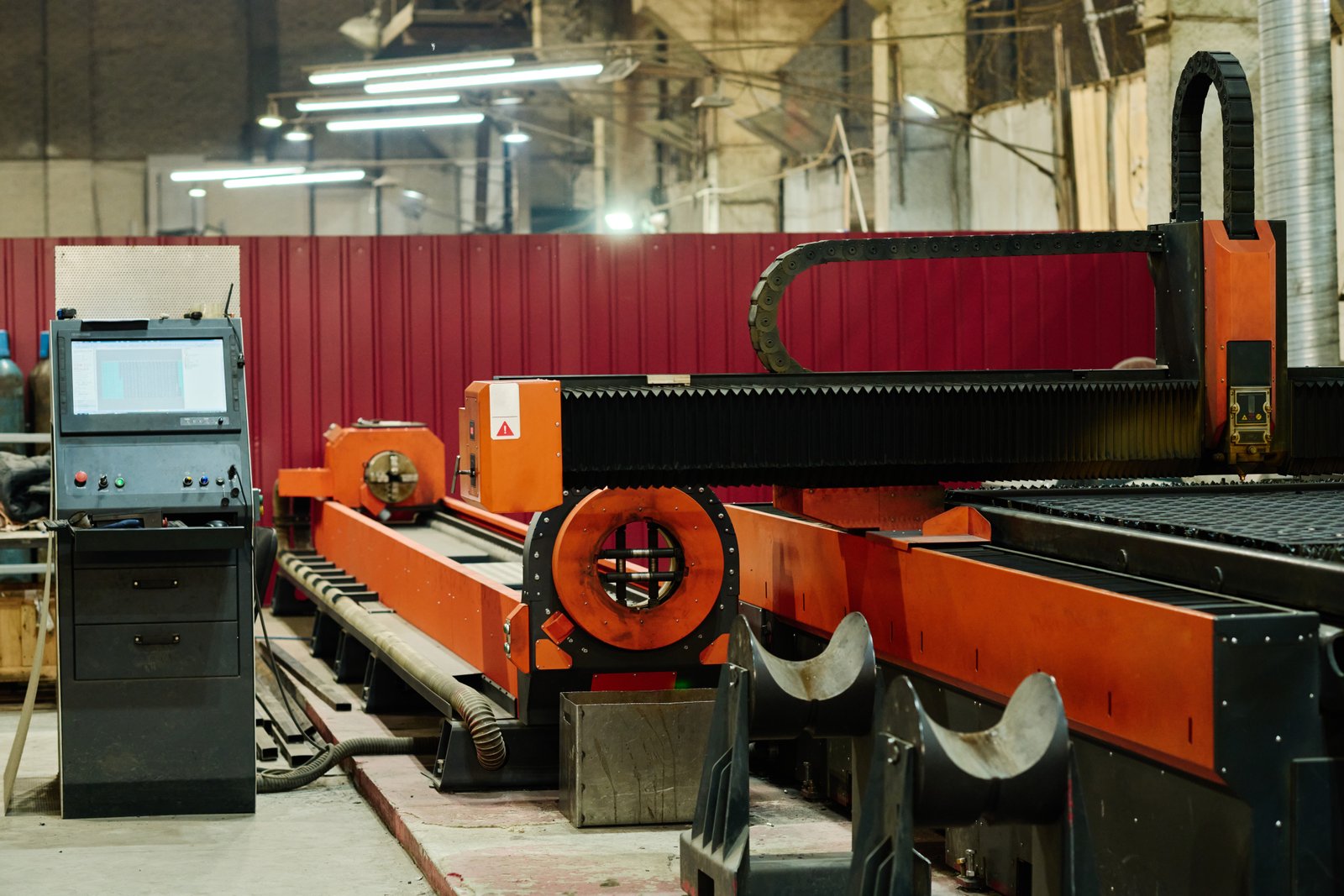
A. Эволюция металла в дизайне мебели
Исторически сложилось так, что в дизайне мебели преимущественно использовалось дерево - материал, который ценился за теплоту, практичность и традиционную эстетику. Однако в начале XX века с приходом индустриализации произошел поворотный момент: появились новые материалы и производственные возможности, которые в корне изменили представление о мебели и ее производстве. Металл, особенно трубчатые формы, стал революционным средством, предлагая беспрецедентную прочность, долговечность и ярко выраженную минималистскую эстетику, которая идеально соответствовала развивающемуся движению модернизма. Новаторские дизайнеры из школы Баухауз, такие как Марсель Бройер с его культовым Стул Василия3Он знаменит тем, что использовал трубчатую сталь для создания предметов, которые были не только более легкими и легко адаптируемыми, но и более простыми в массовом производстве, бросая вызов традиционным представлениям о мастерстве изготовления мебели.
Это основополагающее изменение было не просто эстетическим выбором, а практической эволюцией. Присущее металлическим трубам соотношение прочности и веса позволило создавать открытые, воздушные конструкции, которые были одновременно прочными и визуально легкими, что резко контрастировало с громоздкой деревянной мебелью предыдущих эпох. По мере того как производственные процессы становились все более сложными, увеличивался и потенциал для создания сложных металлических конструкций, что привело к появлению изящных, эргономичных дизайнов, в которых приоритет отдавался как форме, так и функции. Для моего типичного клиента, Ахмеда Аль-Фарси, который владеет средним бизнесом по изготовлению металлоконструкций и активно занимается архитектурными изделиями и деталями для автомобилей, такое понимание материаловедения и его применения является второй натурой. Он понимает, как такие материалы, как сталь и алюминий, при умелой обработке могут превратить исходные компоненты в высокопрочные и эстетически привлекательные готовые изделия, будь то шасси автомобиля или архитектурные перила, изготовленные на заказ.
Переход от дерева к металлу также открыл эру большей последовательности и масштабируемости в производстве мебели. В отличие от древесины, которая может значительно отличаться по текстуре, прочности и содержанию влаги, стандартизированные металлические трубы обладают предсказуемыми свойствами, что делает их идеальными для крупносерийного производства. Такое постоянство имеет решающее значение для отраслей, стремящихся к точному повторению дизайна в больших партиях, обеспечивая единообразие и сокращая количество брака. Внедрение металлических труб позволило заводам оптимизировать сборочные линии, перейдя от кустарных мастерских к промышленным производственным центрам. Такая возможность массового производства напрямую соответствует производственным потребностям таких компаний, как Ahmed's, которые постоянно ищут автоматизированные решения для повышения эффективности производства и обеспечения стабильного качества продукции для клиентов, что подчеркивает основополагающее значение надежной обработки материалов.
B. Функциональная и эстетическая универсальность трубчатых компонентов
Помимо конструктивной целостности, металлические трубы вносят значительный вклад в эстетическую универсальность современной мебели. Их способность сгибаться, свариваться и придавать им практически любую форму дает дизайнерам беспрецедентную степень творческой свободы. Чистые линии, минималистичные профили и сложные геометрические формы, часто характерные для современной и постмодернистской мебели, во многом достижимы благодаря точным манипуляциям с металлическими трубами. Будь то гладкий полированный хром основания офисного кресла, матовый черный каркас промышленного книжного шкафа или элегантный изгиб шезлонга, эстетическая привлекательность металлических трубок неоспорима.
Разнообразные формы труб - круглые, квадратные, прямоугольные, овальные - каждая из них обладает определенными функциональными и эстетическими свойствами, что значительно расширяет возможности дизайна. Например, квадратные трубы обеспечивают прочную, угловатую опору, что часто используется в промышленных или современных проектах, в то время как круглые трубы позволяют создавать более мягкие, плавные формы, что часто встречается в современном стиле середины века или в эргономичных изделиях. Выбор профиля трубы в сочетании с различными видами отделки, такими как порошковое покрытие, гальваника или полировка, позволяет производителям адаптировать продукцию к конкретным сегментам рынка и дизайнерским предпочтениям. Именно эта способность к адаптации позволяет мебельщикам легко интегрировать металлические компоненты с другими материалами, такими как дерево, стекло, ткань и пластик, создавая гибридные конструкции, использующие сильные стороны каждого материала.
Подумайте о сложных требованиях, предъявляемых к современным эргономичным офисным креслам или модульным стеллажам. В таких конструкциях часто требуется множество точно вырезанных и соединенных трубных секций для достижения оптимальной функциональности и устойчивости. Мой опыт показывает, что такие клиенты, как Ахмед, часто берутся за проекты, требующие не только объема, но и сложной геометрии деталей. Его интерес к автоматизированным решениям с возможностью штамповки архитектурных и автомобильных деталей подтверждает потребность в универсальной обработке. Например, создание высокопроизводительного офисного кресла может включать в себя десятки уникальных сегментов труб, каждый из которых требует специфических разрезов, отверстий для крепежа, а иногда и сложной гибки, что подчеркивает незаменимую роль передовых возможностей обработки труб в удовлетворении сложных дизайнерских запросов.
| Тип трубки | Общее использование мебели | Ключевой атрибут | Потребность в обработке |
|---|---|---|---|
| Круглый | Стулья, столы, кровати | Плавные изгибы | Сгибание, вырезание |
| Квадрат | Стеллажи, столы | Структурная стабильность | Прямые резы, соединения |
| Прямоугольная | Скамейки, рамы | Несущая нагрузка, современная эстетика | Точная длина, пробивка отверстий |
| Овал | Дизайнерские детали | Уникальная эстетика, эргономичные ручки | Комплексное формирование, отделка |
C. Экономические и экологические преимущества
Широкое распространение металлических труб в мебельном производстве также обусловлено значительными экономическими и экологическими преимуществами. С экономической точки зрения, металлические трубы обеспечивают превосходное постоянство материала, что напрямую приводит к снижению количества брака и более предсказуемым производственным затратам, особенно при крупносерийном производстве. Автоматизированные станки для резки металлических труб значительно сокращают трудозатраты и повышают производительность, позволяя производителям выпускать больше изделий за меньшее время и с меньшим количеством человеческих ошибок. Для такого предприятия, как MZBNL, наша ориентация на комплексные решения означает, что мы понимаем, насколько это важно. Например, мои беседы с Ахмедом показали его постоянное стремление автоматизировать существующие ручные рабочие процессы и снизить высокую текучесть кадров, что напрямую влияет на итоговую прибыль и конкурентоспособность компании.
Кроме того, долговечность и прочность металлической мебели означают более длительный жизненный цикл изделия, что снижает частоту замены и способствует общей экономии средств для конечного пользователя. С точки зрения экологии, такие металлы, как сталь и алюминий, хорошо поддаются переработке и часто содержат значительный процент вторичного сырья, что сводит к минимуму потребность в первичных ресурсах и уменьшает углеродный след. Это согласуется с растущим вниманием мировой общественности к устойчивому производству. Наш сайт Инновационный безотходный хвостовой материал4, for instance, directly addresses this by maximizing material utilization. Conventionally, up to 10% of a tube could be wasted as an unusable tail, but by redesigning the cutting logic to calculate from the rear chuck as the origin, we’ve effectively eliminated this waste, boosting material efficiency and reducing environmental impact.
The combination of robust design, efficient production, and recyclability positions metal tube furniture as a sustainable choice in an increasingly environmentally conscious market. By embracing advanced processing technologies, manufacturers can not only enhance their economic viability through improved efficiency and reduced waste but also bolster their brand image as environmentally responsible entities. This dual benefit—economic gain coupled with ecological stewardship—is a compelling argument for the continued evolution and adoption of sophisticated metal tube cutting solutions across the furniture industry, ensuring a resilient and responsible future.
Metal tubes enable lightweight furnitureПравда
Their high strength-to-weight ratio allows for durable yet lightweight designs, crucial for modern furniture.
Wood offers better consistency than metalЛожь
Standardized metal tubes provide more predictable properties than wood, which varies in grain and moisture content.
Современные тенденции в технологии резки металлических труб
Are you relying on outdated metal tube cutting methods, hindering your furniture production? Traditional approaches often lead to inefficiency, excessive waste, and an inability to realize complex designs. Embracing current cutting technology is essential for gaining a competitive edge and fostering innovation.
Current trends in metal tube cutting technology are characterized by increased automation, precision, and integration of smart systems. Fiber laser cutting machines lead the way with high-speed, contactless processing, minimal material distortion, and the ability to handle diverse metals. Software advancements enable complex geometries, optimize material usage, and simplify operation, pushing the boundaries of furniture design and manufacturing efficiency.
As we’ve established the critical role of metal tubes in furniture, it's equally important to examine the technologies that make their precise application possible. The landscape of metal tube cutting is far from static; it’s a dynamic field experiencing rapid innovation, driven by demands for greater speed, accuracy, and versatility. The days of purely manual or even basic automated cutting are giving way to sophisticated systems that incorporate advanced laser technology, robotics, and intelligent software. These trends are not just incremental improvements; they represent a fundamental shift in production capabilities, enabling manufacturers to achieve previously unattainable levels of precision and design complexity while simultaneously optimizing material usage and reducing operational costs. Let's explore the cutting-edge advancements currently redefining the possibilities for metal tube fabrication5 in the furniture sector and beyond.
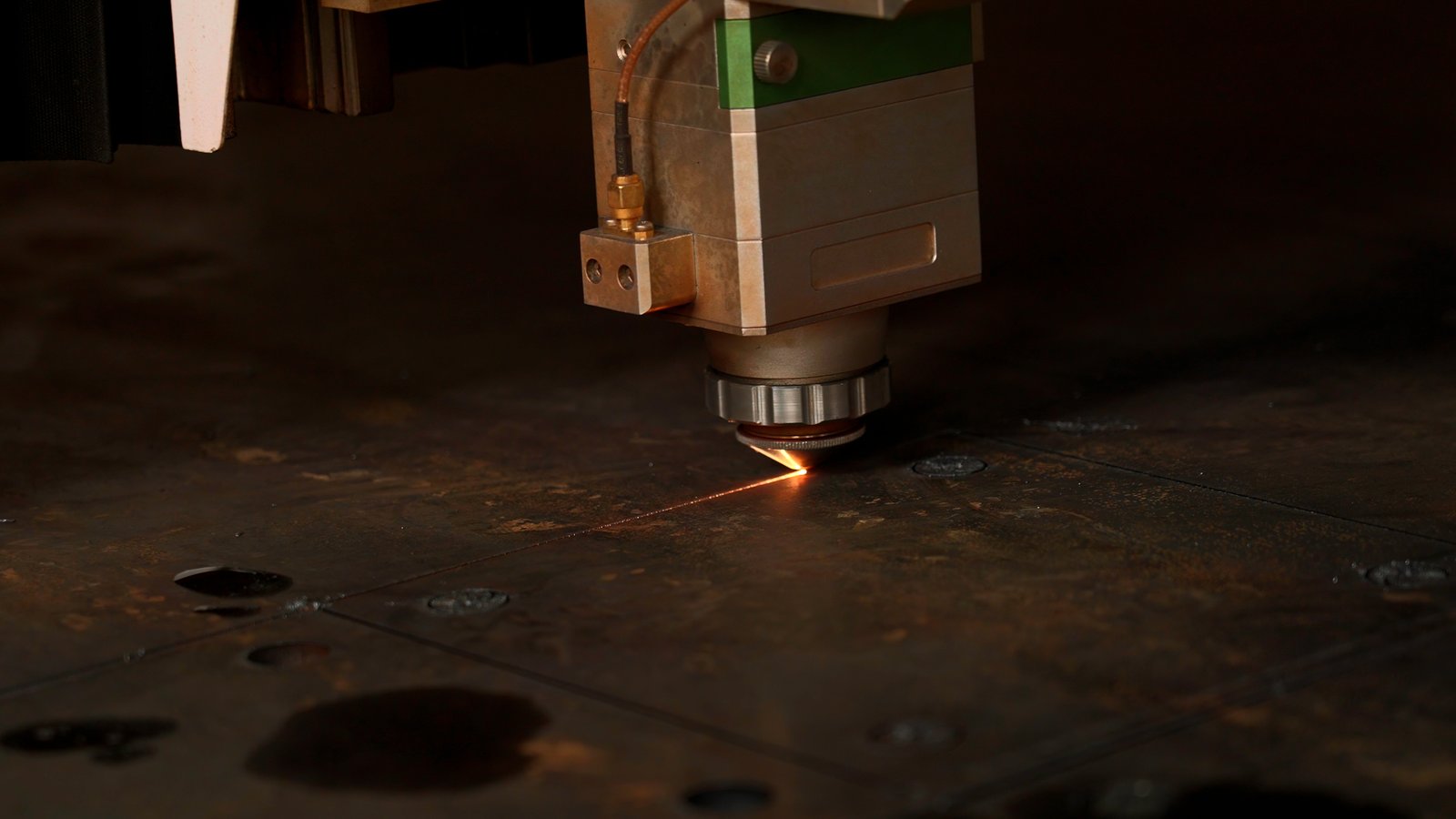
A. The Dominance of Fiber Laser Technology
In the evolving landscape of metal tube cutting, fiber laser technology has emerged as the unequivocal leader, fundamentally transforming how metal components are processed for furniture and other industries. Unlike traditional methods such as sawing, plasma cutting, or even CO2 lasers, fiber lasers offer unparalleled speed, precision, and versatility. Their highly focused beam enables ultra-fine cuts with minimal heat affected zones (HAZ), reducing material distortion and eliminating the need for extensive post-processing. This precision is critical for furniture manufacturers, where perfectly fitting joints and aesthetically pleasing finishes are paramount for the final product's quality and appearance.
The efficiency gains from fiber laser technology are substantial. For instance, a typical fiber laser tube cutting machine can process multiple cuts, holes, and complex contours on a single tube in a fraction of the time it would take using conventional methods. Data from industry reports indicate that fiber laser systems can achieve cutting speeds up to three times faster than CO2 lasers for thin-gauge materials, and significantly reduce power consumption by up to 50%. This not only accelerates production cycles but also lowers operational costs, making it a compelling investment for businesses aiming to scale their output without compromising on precision. This aligns perfectly with MZBNL's commitment to high-speed and high-precision cutting, offering solutions that directly contribute to our clients' efficiency goals.
Furthermore, the non-contact nature of fiber laser cutting means less tool wear and consistent performance across a wide range of metal types, including stainless steel, mild steel, aluminum, and brass, in various thicknesses. This versatility is crucial for furniture manufacturers who work with diverse materials and design specifications. For example, a single machine can efficiently handle the intricate cuts for a lightweight aluminum chair frame and then seamlessly transition to cutting robust steel tubes for a heavy-duty industrial shelving unit, highlighting the adaptive capabilities that modern furniture production demands.
B. Automation and Smart Systems Integration
A key trend in advanced metal tube cutting is the increasing level of automation and the integration of smart systems, moving beyond simple cutting to comprehensive, intelligent fabrication processes. This involves sophisticated automatic feeding and loading mechanisms that significantly reduce manual labor and improve throughput. At MZBNL, our Front-Feeding Innovation is a prime example of this, where an optimized mechanism automatically pulls the tube in from the front, boosting feeding efficiency by approximately 40% and reducing operator labor intensity by a similar margin. This directly addresses the pain points of high operator turnover and the need for greater efficiency that clients like Ahmed Al-Farsi frequently articulate.
Beyond loading, smart systems integrate real-time monitoring, predictive maintenance, and quality control. Sensors on the machine collect data on cutting parameters, material usage, and machine health, feeding this information into digitalized systems. This allows manufacturers to track production progress, identify potential issues before they lead to downtime, and optimize processes for maximum output and minimal waste. This level of digitalization ensures consistent product quality and enhances overall operational transparency, aligning with MZBNL's focus on smart and digitalized systems that empower intelligent manufacturing.
The convergence of automation and smart technology creates a highly responsive and adaptable manufacturing environment. For instance, in a scenario where a furniture factory needs to quickly shift production from one design to another, an automated system with integrated smart controls can rapidly reconfigure cutting parameters and material handling processes, minimizing setup times and maximizing flexibility. This agility is invaluable in today's fast-paced market, enabling manufacturers to respond swiftly to changing consumer demands and emerging design trends, providing a distinct competitive advantage over those relying on less integrated systems.
C. Software Advancements and User Interface Simplification
Perhaps one of the most transformative trends in metal tube cutting technology is the evolution of software, making complex operations more accessible and efficient. Traditionally, operating these machines required skilled CAD (Computer-Aided Design) operators to create or modify intricate 3D drawings, a time-consuming and often bottleneck-inducing process. This was a significant pain point for Ahmed Al-Farsi, who expressed concerns about needing skilled CAD operators and the burden of retraining due to high operator turnover. Our No-CAD Operating System directly addresses this.
With MZBNL’s pioneering No-CAD system, standard tube types and hole patterns can now be processed simply by entering parameters—no complex drawing required. This innovation dramatically improves ease of use, shortens setup time, and significantly lowers the skill threshold for machine operation. Operators now only need one day of on-site training instead of spending fifteen days at an equipment factory, translating into immediate productivity gains and reduced training costs for businesses. This simplification not only democratizes access to advanced manufacturing capabilities but also empowers smaller businesses or those with less specialized workforces to leverage high-tech machinery.
Furthermore, advanced nesting software integrated within these systems optimizes material utilization by strategically arranging cuts to minimize scrap, directly contributing to cost savings and environmental sustainability. Simulation software allows operators to visualize the cutting process before execution, identifying potential errors or inefficiencies, thereby reducing material waste and machine downtime. This combination of intuitive interfaces, powerful optimization algorithms, and simplified programming makes modern metal tube cutting machines not just tools, but intelligent manufacturing partners that enhance productivity and profitability for furniture manufacturers globally.
Fiber lasers reduce material distortionПравда
Fiber lasers' focused beam minimizes heat affected zones, preserving material integrity.
CO2 lasers cut faster than fiberЛожь
Fiber lasers achieve speeds up to 3x faster than CO2 lasers for thin materials.
Проблемы, возникающие при обработке металлических труб для производства мебели
Even with technological strides, metal tube processing for furniture still presents significant hurdles. These challenges often lead to material waste, production bottlenecks, and compromised product quality. Recognizing and understanding these issues is crucial for implementing effective, long-term solutions.
Challenges in metal tube processing for furniture include achieving high precision for complex joints, managing material waste from tail ends, ensuring consistent quality across batches, and the high skill requirement for operating traditional machinery. Additionally, balancing customization demands with efficient mass production and addressing long machine lead times remain persistent difficulties for manufacturers.
While advanced technologies offer immense potential, it's vital to acknowledge that the path to optimized metal tube processing is not without its obstacles. Furniture manufacturers, regardless of their scale, consistently grapple with a range of challenges that can impact everything from design flexibility to profitability. From the inherent complexities of achieving perfectly aligned joints for intricate furniture pieces to the often-overlooked issue of material waste generated during cutting, these hurdles demand strategic consideration. Furthermore, the operational aspects—such as the need for highly skilled labor to manage complex CAD designs or the pervasive issue of long machine lead times—can create significant bottlenecks. Understanding these core pain points is crucial, as it lays the groundwork for appreciating how truly innovative solutions can alleviate these pressures and drive industry-wide improvements.
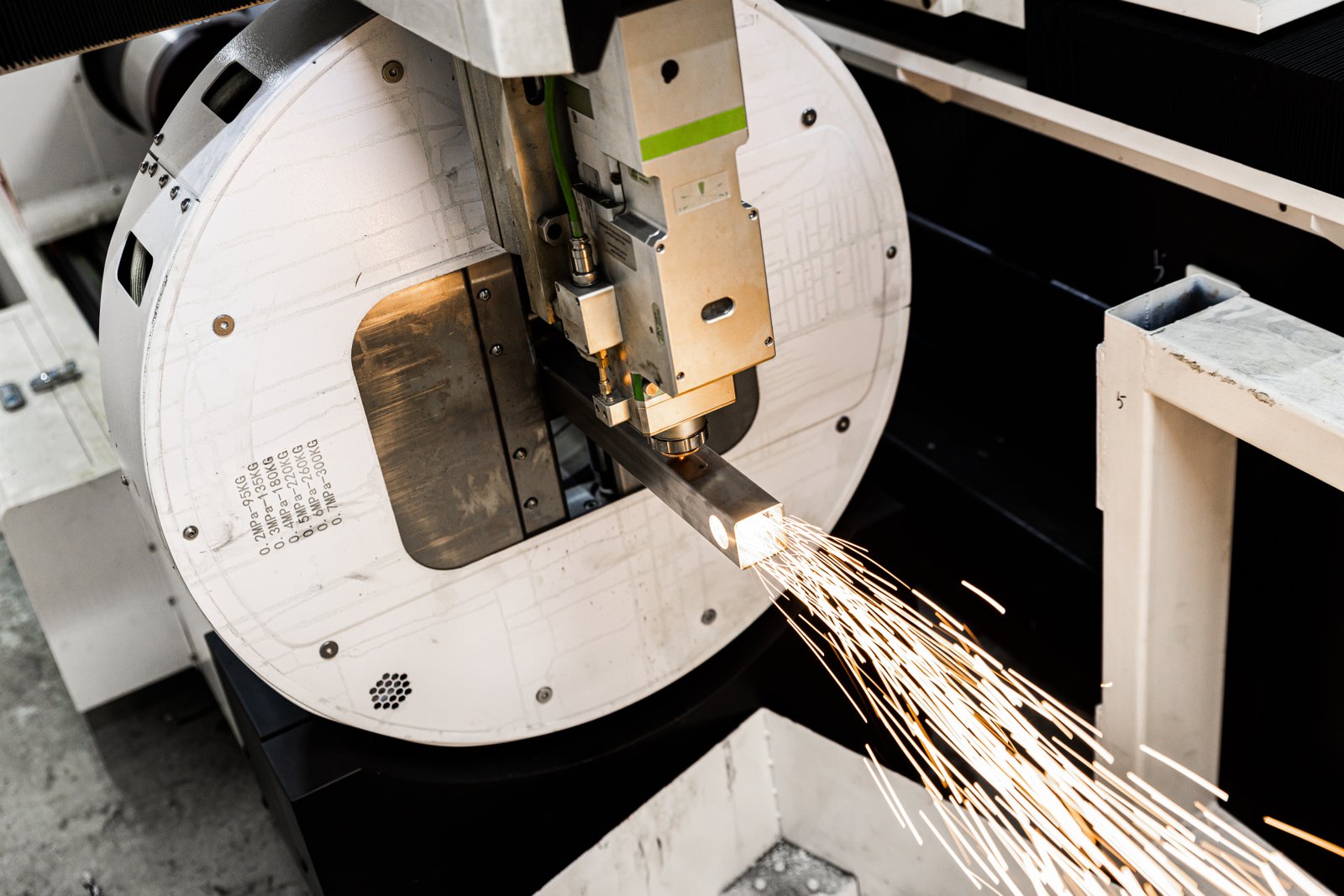
A. Precision and Complexity of Joins
One of the most persistent challenges in metal tube processing for furniture manufacturing6 lies in achieving the extreme precision required for flawless joints. Unlike other applications where slight discrepancies might be acceptable, furniture demands seamless, aesthetically pleasing connections that also contribute to structural integrity and durability. Any deviation in cut angles, lengths, or hole placements can lead to ill-fitting parts, requiring costly rework or, worse, becoming unusable scrap. This issue is magnified when dealing with intricate designs involving multiple angles, curves, or complex interlocks, such as those found in ergonomic office chairs or multi-component shelving systems.
Historically, achieving these precise joins often relied on highly skilled manual labor or rudimentary machinery, which made mass production challenging and inconsistent. Even with semi-automated solutions, variations in operator skill could lead to significant quality fluctuations. For example, creating a perfect fishmouth joint—a common requirement for attaching one tube perpendicularly to another—demands incredibly accurate profiling and cutting, which is exceedingly difficult to achieve manually without extensive grinding and deburring. Industry data suggests that manual methods can lead to scrap rates upwards of 15%7 for complex components due to human error and inconsistency, directly impacting profitability.
The demand for customization and unique design elements further compounds this challenge. Modern furniture trends often lean towards bespoke pieces or limited production runs, each potentially requiring unique joint configurations. This necessitates a cutting system capable of rapid, precise adaptation. The ability to program complex cuts with minimal setup changes is no longer a luxury but a fundamental requirement to address this challenge effectively, ensuring that every joint, whether a miter, coping, or saddle, fits perfectly the first time, every time.
B. Material Waste and Cost Management
Another critical challenge for furniture manufacturers is managing material waste and its direct impact on production costs. Traditional tube cutting methods, particularly those involving manual feeding or older automated systems, often result in significant unusable tail material at the end of each tube. This leftover section, too short to be processed into a usable component, accumulates quickly, representing a substantial economic loss. Depending on the tube length and product design, this waste can account for a considerable percentage of raw material expenditure, directly eroding profit margins.
Furthermore, inefficient nesting—the process of arranging multiple parts on a single tube to maximize material utilization—can exacerbate this waste. Without intelligent software algorithms, parts might be cut in a suboptimal sequence, leading to more unusable offcuts or larger scrap pieces than necessary. For a mid-sized metal fabrication business like Ahmed Al-Farsi’s, where cost-performance ratio is highly valued, minimizing material waste is paramount. Every inch of wasted metal directly translates to lost revenue and increased operational expenses, making inefficient cutting a critical pain point that undermines overall profitability and competitiveness in a demanding market.
Our Zero-Waste Tail Material Innovation at MZBNL directly addresses this persistent problem. Unlike conventional laser cutting systems that start cutting from the tube head and typically generate unusable tail material, we redesigned the cutting logic to calculate from the rear chuck as the origin. This allows the system to eliminate leftover tail material entirely, as long as the remaining section is smaller than the product length. This revolutionary approach maximizes material utilization, potentially reducing waste by up to 10-15% per tube, which translates directly into substantial savings on raw material costs for our clients, demonstrating how targeted technological solutions can turn a significant challenge into a key competitive advantage.
C. Operational and Workforce Challenges
The operational environment within furniture manufacturing presents its own set of challenges, particularly concerning workforce skills and machine lead times. A major pain point, as highlighted by clients like Ahmed Al-Farsi, is the reliance on highly skilled CAD operators for traditional metal tube cutting machines. Finding and retaining such specialized talent is increasingly difficult, and high operator turnover—a common issue in manufacturing—leads to constant retraining burdens and disruptions in production. This dependence on expert human intervention creates bottlenecks and increases labor costs, making it difficult for businesses to scale efficiently.
Moreover, the training period for these complex systems can be extensive, often requiring weeks of off-site instruction at the equipment factory. This not only incurs direct training costs but also represents lost productivity while key personnel are away from the production floor. Ahmed's experience confirms this, as he seeks turnkey solutions that are easy to install and operate, valuing suppliers who provide comprehensive post-sales training and support. The aspiration for automation, driven by the desire to reduce dependency on specialized skills and minimize training overheads, is a universal need across the industry.
Another critical challenge is the issue of long machine lead times. For many suppliers, the waiting period for new, advanced machinery can stretch into several months, significantly impacting project delivery schedules and business expansion plans. This delay can stifle growth and prevent manufacturers from capitalizing on new market opportunities or fulfilling large orders promptly. Addressing these operational hurdles—from simplifying machine operation to ensuring timely equipment delivery and robust after-sales support—is essential for any supplier aiming to genuinely partner with and empower furniture manufacturers in their pursuit of efficiency and sustained growth.
Precision is critical for metal furniture jointsПравда
Metal furniture requires perfect joint alignment for both aesthetics and structural integrity, unlike other applications where minor deviations might be acceptable.
Manual cutting eliminates material wasteЛожь
Manual cutting often generates more waste due to inconsistent measurements and inefficient nesting compared to advanced automated systems with intelligent software.
Решения, предлагаемые современными станками для резки металлических труб
Are the complexities of metal tube processing for furniture holding back your innovation and efficiency? These challenges often lead to frustration, increased costs, and missed growth opportunities. Advanced metal tube cutting machines offer comprehensive solutions, transforming pain points into competitive advantages for your business.
Advanced metal tube cutting machines provide solutions through superior precision, automated material handling, and intelligent software. Features like MZBNL's No-CAD system simplify operation, while Zero-Waste Tail Material technology minimizes waste. Integrated multi-process capabilities, high-speed cutting, and digitalized systems collectively enhance efficiency, reduce labor costs, and enable intricate, customized furniture designs.
Having thoroughly explored the persistent challenges that furniture manufacturers face in metal tube processing, it’s time to pivot towards the innovative solutions that are reshaping the industry. The good news is that technological advancements in metal tube cutting machines are not merely incremental; they are truly transformative, directly addressing the pain points we’ve discussed. These aren't just machines; they are sophisticated systems designed to optimize every stage of the fabrication process, from design input to material utilization and final product output. By leveraging cutting-edge features like enhanced automation, intelligent software, and unparalleled precision, manufacturers can overcome previous limitations and unlock new levels of efficiency, cost-effectiveness, and design freedom. Let's delve into how these advanced solutions are empowering businesses to thrive in a demanding market.

A. Precision and Efficiency through Automation
Advanced metal tube cutting machines offer unparalleled precision and efficiency, fundamentally transforming furniture manufacturing. These machines, particularly those employing fiber laser technology, can execute complex cuts with micron-level accuracy, ensuring that every component fits perfectly without the need for extensive rework or manual adjustments. This high precision is crucial for intricate furniture designs where multiple tube segments must align flawlessly to form strong, aesthetically pleasing joints. MZBNL's machines are specifically designed for high-speed and high-precision cutting, enabling furniture manufacturers to consistently produce components that meet the most stringent quality standards, reducing scrap rates and boosting overall output.
Furthermore, integrated automation features significantly enhance efficiency by minimizing manual intervention. Automated loading and unloading systems, for instance, ensure a continuous flow of material, eliminating bottlenecks and maximizing machine uptime. Our Front-Feeding Innovation is a prime example of this: by automatically pulling tubes from the front, we increase feeding efficiency by approximately 40% and drastically reduce operator labor intensity. This not only accelerates production cycles but also frees up human resources for more complex, value-added tasks, directly translating into higher productivity and lower labor costs for our clients.
For a client like Ahmed Al-Farsi, whose business demands automation to upgrade production efficiency and reduce operator turnover, these features are invaluable. He seeks turnkey solutions that are easy to install and operate, and our automated systems provide just that. By streamlining the entire cutting process, from raw material handling to precise component fabrication, these advanced machines ensure consistent quality across large batches, making mass production more reliable and cost-effective than ever before.
B. Smart Software and User-Friendly Operation
A cornerstone of modern metal tube cutting solutions is intelligent software combined with user-friendly interfaces, dramatically simplifying complex operations. One of the most significant breakthroughs in this area is MZBNL's pioneering No-CAD Operating System. Traditionally, operating a laser tube cutting machine required highly skilled CAD operators to create or modify intricate 3D drawings, a time-consuming process that often caused production delays and increased labor costs. This was a particular pain point for Ahmed, who grappled with the need for skilled CAD operators and the burdens of retraining.
With our No-CAD system, standard tube types and hole patterns can be processed by simply entering parameters, eliminating the need for complex drawings. This innovation significantly lowers the skill threshold for machine operation, meaning operators now need only one day of on-site training instead of a conventional 15-day factory training period. This ease of use not only reduces training costs and time but also mitigates the impact of operator turnover, ensuring that production can continue smoothly with minimal disruption. It empowers a broader range of personnel to manage the machinery, making advanced technology accessible to more businesses.
Moreover, intelligent software enables rapid prototyping and flexible design changes. Designers can quickly modify part parameters or even completely reconfigure a design, and the machine can adapt almost instantly, allowing furniture manufacturers to respond swiftly to market trends and customize products on demand. This agility, combined with the simplified operational experience, makes these advanced machines indispensable tools for businesses aiming for both high efficiency and unparalleled design flexibility in the competitive furniture industry.
C. Cost Optimization and Material Utilization
Advanced metal tube cutting machines offer substantial opportunities for cost optimization, primarily through superior material utilization and multi-process integration. Our Zero-Waste Tail Material Innovation exemplifies this. Conventional laser cutting systems typically generate unusable tail material, leading to significant scrap. By redesigning the cutting logic to calculate from the rear chuck as the origin, our system eliminates leftover tail material as long as the remaining section is smaller than the product length. This revolutionary approach maximizes material utilization, potentially reducing waste by up to 10-15% per tube, which translates directly into substantial savings on raw material costs for our clients.
Beyond waste reduction, the integration of multiple processes within a single machine, such as cutting and punching, further enhances cost-effectiveness. For instance, MZBNL offers Automatic Punching & Cutting Integrated Machines. This multi-process capability means furniture components requiring both cutting and hole punching can be completed in one continuous operation, eliminating the need for separate machines, additional setups, and material transfers between workstations. This integrated workflow significantly reduces production time, labor, and the potential for errors, driving down the cost per part.
For customers like Ahmed, who prioritize a high cost-performance ratio and are looking for automatic feeding and punching capabilities, these integrated solutions are a game-changer. They provide a complete, streamlined manufacturing solution that not only produces high-quality components efficiently but also minimizes operational overheads. This holistic approach to efficiency and material management ensures that every investment in advanced metal tube cutting technology yields significant returns, strengthening the manufacturer's competitive position in the furniture market.
Fiber lasers enable micron-level precisionПравда
Advanced fiber laser cutting systems achieve ±0.1mm accuracy, crucial for complex furniture joints.
Системы No-CAD требуют длительного обученияЛожь
MZBNL's No-CAD system reduces operator training from 15 days to just 1 day.
Перспективы развития резки металлических труб в мебельной промышленности
Is your furniture manufacturing prepared for tomorrow's demands for adaptability and efficiency? Relying solely on current methods might limit your capacity to meet evolving consumer expectations and market dynamics. Embracing emerging trends in metal tube cutting is vital for future-proofing your production and unlocking new possibilities.
The future of metal tube cutting in furniture envisions greater integration with AI, real-time data analytics, and full automation, moving towards 'lights-out' manufacturing. Further advancements will enable seamless mass customization, utilize novel materials, and promote sustainable production through enhanced waste reduction and energy efficiency, ensuring the industry remains agile and responsive to evolving design and market demands.
Having explored the current state and solutions offered by advanced metal tube cutting machines, it’s only natural to gaze into the future. The furniture industry is in a constant state of evolution, driven by shifting consumer preferences, technological breakthroughs, and an increasing emphasis on sustainability. What new innovations can we anticipate, and how will they further transform the fabrication of metal furniture components? The trajectory suggests an even more integrated, intelligent, and autonomous manufacturing environment. From the pervasive influence of Artificial Intelligence to the advent of 'lights-out' factories, the coming years promise to redefine the very essence of production, offering unprecedented levels of efficiency, customization, and environmental responsibility. Let's explore these exciting prospects and their potential impact.

A. The Rise of "Smart Factories" and AI Integration
The future of metal tube cutting in the furniture industry is inextricably linked to the concept of "Smart Factories" and the pervasive integration of Artificial Intelligence (AI). We are moving towards fully autonomous "lights-out" manufacturing environments where machines can operate with minimal human supervision, driven by intelligent algorithms that optimize every aspect of the production process. AI and Machine Learning (ML) will revolutionize predictive maintenance, enabling machines to anticipate failures and schedule maintenance proactively, dramatically reducing downtime and extending equipment lifespan. This proactive approach ensures continuous operation, a critical factor for high-volume furniture production.
Beyond maintenance, AI will enhance process optimization and quality control. Real-time data collected from sensors on machines will be analyzed by AI to adjust cutting parameters, material flow, and even design specifications on the fly, ensuring peak performance and consistent product quality. For example, AI-powered vision systems could detect minuscule defects in tube material or cut components, automatically adjusting the process or flagging issues before they lead to significant waste. This level of intelligent automation pushes the boundaries of efficiency and precision beyond current capabilities.
The Internet of Things (IoT) will facilitate seamless communication between machines, creating a cohesive production ecosystem. From automated material storage systems delivering tubes to the cutting machine, to robotic arms transferring cut components to the next processing stage (like bending or welding), every element will be interconnected. This integrated system will allow for unprecedented levels of coordination and efficiency, minimizing human intervention and maximizing throughput, epitomizing MZBNL's vision of smart and digitalized systems that are ready for the factory of tomorrow.
B. Mass Customization and On-Demand Production
One of the most exciting prospects for metal tube cutting in the furniture industry is the acceleration of mass customization and true on-demand production. As consumer preferences shift from standardized products to personalized items, manufacturers must adapt. Advanced tube cutting technologies, coupled with sophisticated software, will enable factories to produce unique, customized furniture pieces at the efficiency levels previously reserved for mass production. This means a customer could specify unique dimensions, specific joint types, or even personalized designs for a chair or shelving unit, and the factory could produce it rapidly and cost-effectively.
This shift will significantly reduce the need for large inventories, a major cost for furniture companies. Instead of manufacturing large batches of a few designs, factories can produce exactly what is ordered, when it is ordered. This "pull" system of manufacturing minimizes waste, warehousing costs, and the risk of obsolete stock. For my typical customer, Ahmed Al-Farsi, whose business thrives on contract-based fabrication services for architectural metalwork and auto parts, this capability to swiftly produce highly customized components on demand would be a powerful differentiator, allowing him to cater to niche markets and specific client requirements with unprecedented agility.
The flexibility inherent in these future systems will also allow furniture manufacturers to respond almost instantaneously to new design trends and market demands. A popular design might quickly be adapted into multiple variants, or entirely new product lines can be launched with minimal retooling. This agility will transform the competitive landscape, favoring companies that can rapidly innovate and deliver personalized products, further cementing the role of advanced, adaptive tube cutting technologies as essential for future business success.
C. Sustainability and Circular Economy Principles
The future of metal tube cutting will place an even greater emphasis on sustainability and adherence to circular economy principles. While current technologies, like MZBNL's Zero-Waste Tail Material Innovation, already make significant strides in reducing scrap, future advancements will push this even further. Expect improved nesting algorithms that can achieve near-perfect material utilization across diverse part geometries and dynamic production schedules, leading to virtually no raw material waste during the cutting process. This will not only reduce costs but also significantly lower the environmental footprint of furniture manufacturing.
Energy efficiency will continue to be a primary focus in machine design and operation. Future laser systems will consume even less power while delivering higher performance, and smart factory grids might dynamically adjust energy usage based on production loads and renewable energy availability. This aligns with a global movement towards greener manufacturing. Furthermore, the inherent recyclability of metals like steel and aluminum will be leveraged more systematically, with closed-loop systems that facilitate the collection, reprocessing, and reintroduction of metal waste back into the production cycle, minimizing reliance on virgin resources.
This commitment to a circular economy will influence furniture design itself, encouraging "design for disassembly" and the use of modular components that can be easily repaired, upgraded, or recycled at the end of their lifecycle. For businesses, embracing these sustainable practices will not only meet increasing regulatory pressures but also appeal to a growing segment of environmentally conscious consumers. By integrating advanced metal tube cutting technologies that champion resource efficiency and waste reduction, the furniture industry can pave the way for a more responsible, resilient, and environmentally sound future.
AI enables predictive maintenanceПравда
AI algorithms can analyze machine data to predict failures before they occur, reducing downtime in metal tube cutting operations.
Mass customization increases inventoryЛожь
On-demand production actually reduces inventory needs by manufacturing only what's ordered, minimizing warehousing costs.
Заключение
Advanced metal tube cutting machines revolutionize furniture manufacturing through unparalleled precision, automation, and efficiency. Innovations like MZBNL’s No-CAD and Zero-Waste systems address key pain points. They enable intricate designs, mass customization, and sustainable production, crucial for businesses optimizing costs, enhancing quality, and thriving in evolving markets.
-
Discover how CNC machines enhance precision and efficiency in cutting metal tubes. ↩
-
Learn about the structural and aesthetic applications of metal tubes in furniture. ↩
-
Explore the significance of tubular steel in modernist furniture design. ↩
-
Understand how Zero-Waste technology reduces material waste in metal tube cutting. ↩
-
Learn about innovations in metal cutting that optimize efficiency and design in furniture manufacturing ↩
-
Learn about the specific issues faced in metal tube processing for furniture ↩
-
Understand the profitability impact of manual processing scrap rates ↩
У вас есть вопросы или нужна дополнительная информация?
Свяжитесь с нами, чтобы получить индивидуальную помощь и квалифицированный совет.
